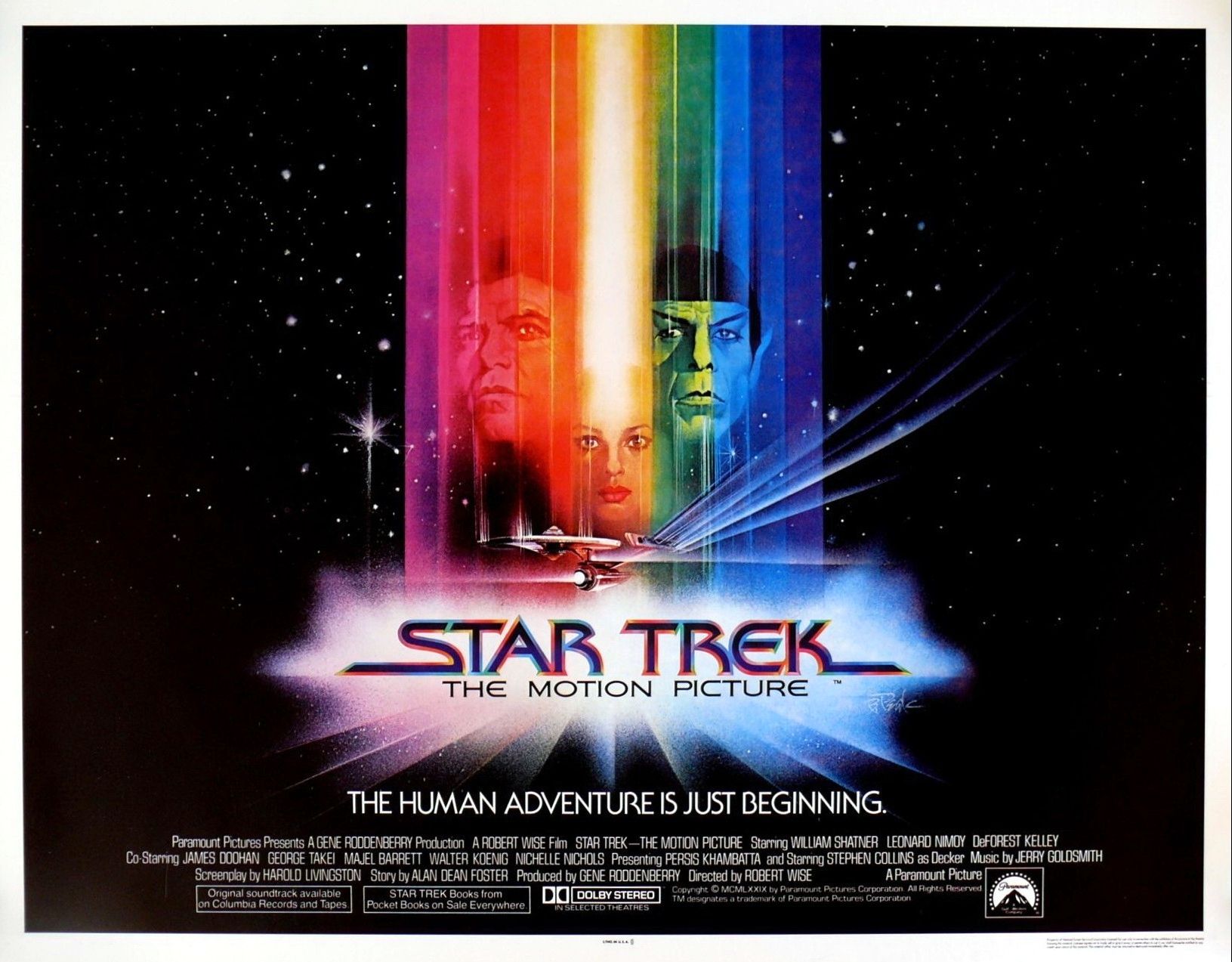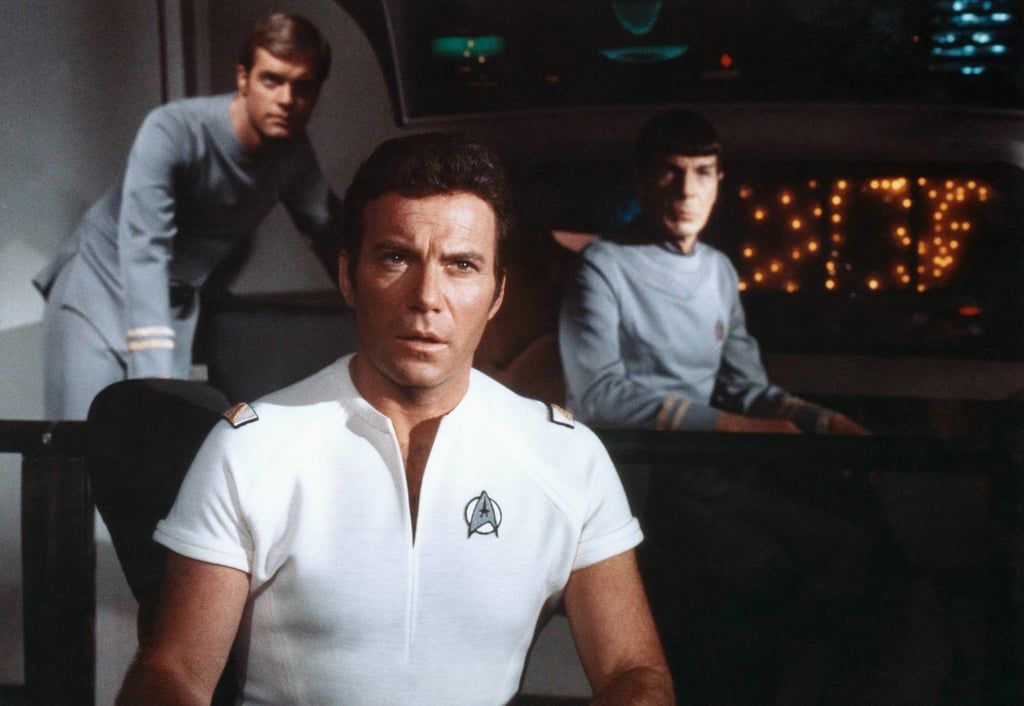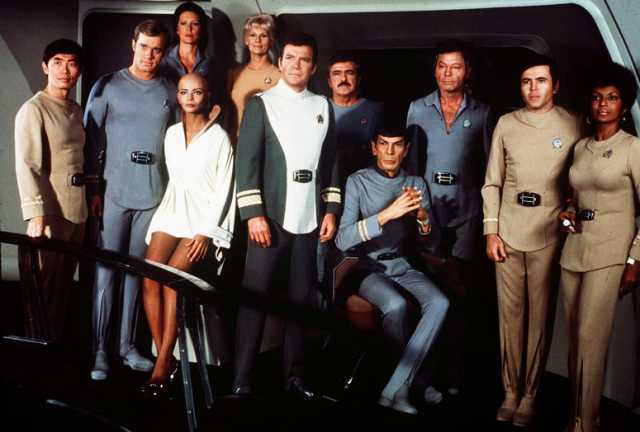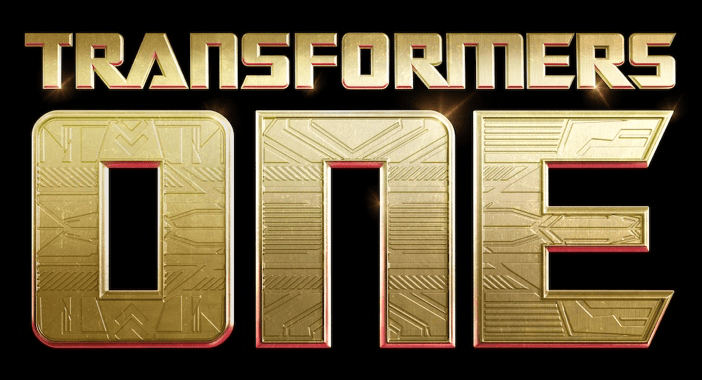RETRO MOVIE REVIEW: Star Trek: The Motion Picture

From the outset, I“ll admit that Star: Trek: The Motion Picture was never my favorite Trek movie growing up. Like perhaps many did, I laughed when this film was referred to as “The Motionless Picture”“, even by people like Trek novelist and comic writer Peter David. Even cast members had their misgivings about this film; Leonard Nimoy, for instance, felt that the movie didn“t make the best use of the TOS Trek characters. While all that is not an entirely unfair assessment of this film, it seemed worthwhile to look back at this film, especially in light of the state of Trek in recent times.
Surprisingly, after over thirty years, Star Trek: The Motion Picture holds up far better than its reputation suggests. This is not to say that it isn“t a flawed film, or that the earlier criticisms aren“t valid, because they certainly are. The main problem with this movie lies with the editing, and specifically with the fact that too much extraneous content slows down the movie too much. It“s nearly an hour before the Enterprise crew even encounters the V“Ger probe, with too much time spent in establishing the crew and setting up the ship“s technical problems. The docking scene where Scotty and Kirk are waiting in the shuttle is especially much too long, and even the excellent Jerry Goldsmith score doesn“t justify the decision to keep in all that material. Likewise, half of the original cast gets buried with not much to do””Sulu, Chekov and Uhura are barely more than extras for much of the film. This is a  movie that suffers from poor time management, with visually interesting but glacially paced scenes remaining in, while good classic characters get buried beneath the weight of the excess. The uniforms were not very good, and it took Wrath of Khan to improve the uniform designs. There are also unintentionally hilarious moments such as the wormhole scene, where the voice distortions and trippy visuals make what should have been a tense scene laugh-out-loud funny.
movie that suffers from poor time management, with visually interesting but glacially paced scenes remaining in, while good classic characters get buried beneath the weight of the excess. The uniforms were not very good, and it took Wrath of Khan to improve the uniform designs. There are also unintentionally hilarious moments such as the wormhole scene, where the voice distortions and trippy visuals make what should have been a tense scene laugh-out-loud funny.
That having been said, there“s plenty of good that outweighs the bad in this movie, and it“s a film that“s easier to appreciate as one grows older. Star Trek: The Motion Picture was trying to embrace the classic Star Trek formula while also bringing in influences from Stanley Kubrick“s 2001. This is not an inherently bad idea, since both are meant to be intellectual science fiction dealing with big ideas and thought-provoking imagery. It may have been that Gene Roddenberry and director Robert Wise were trying to take an episode of classic Star Trek and give it a big-screen impact. At some moments, they succeed with this, especially during Spock“s flight into the core of V“Ger in a thruster suit. This is the moment where the film becomes the most Kubrickian, using the character of Spock to connect those themes in a digestible way. The story is a metaphor for the idea of a young person trying to find their purpose in life, using the character of V“Ger to explore that rite of passage. Once the film hits the second half, the movie finds its rhythm by connecting more strongly to its thematic ideas.

Likewise, this is a story that makes solid use of its core characters when the excess is pared away. Kirk is a man desperately trying to hold on to being a starship captain, which, as Spock would famously remind him in Wrath of Khan, is his “first, best destiny”“. However, the film makes the bold decision of having Kirk make mistakes in the early half of the film, rather than portraying him as the perfect leader he“s often held up as. Kirk“s journey is the realization that he“s fighting too hard for his destiny, learning to let go rather than hold the ship together through sheer will, as he has often done. Spock is similarly lost in his pursuit of pure logic, denying himself as he denies his more emotional human half. His contact with V“Ger shows Spock why the attainment of pure logical discipline isn“t enough, why being human matters. However, the best character in the film is Doctor McCoy, the one character fully in tune with his own humanity, reluctantly returning to the ship and embracing his own purpose as the Enterprise crew“s moral conscience. McCoy gets many of the film“s best lines, and DeForest Kelley“s performance is as strong and emotional as ever. The core trio of Kirk, Spock, and McCoy as played by Shatner, Nimoy, and Kelley are all on point, all extremely well acted, and always enjoyable to see together.
This was also a groundbreaking film in many ways for Star Trek, and it“s easy to forget how many precedents it set as the first Star Trek feature film. This was the film that first introduced the redesign of the Klingons, moving away from the Mongolian-inspired look and bringing in the ridged foreheads and a more alien design. This Klingon design would be a mainstay of the series for decades, not changing until the J.J. Abrams era. This movie introduced the Jerry Goldsmith  theme that would later be used as the main theme for Star Trek: The Next Generation. Likewise, this film introduced ideas that would later be refined on TNG. Commander Decker and Lieutenant Ilia, for instance, were based on the same template that Gene Roddenberry would later use to design Commander Will Riker and Counselor Deanna Troi. This movie also set the precedent for Star Trek“s exploration of machine intelligence, which would later be explored through Data and other Soong-type androids, as well as The Borg. While many of these ideas would be executed better later on, this film and the success of its sequels would make those stories possible.
theme that would later be used as the main theme for Star Trek: The Next Generation. Likewise, this film introduced ideas that would later be refined on TNG. Commander Decker and Lieutenant Ilia, for instance, were based on the same template that Gene Roddenberry would later use to design Commander Will Riker and Counselor Deanna Troi. This movie also set the precedent for Star Trek“s exploration of machine intelligence, which would later be explored through Data and other Soong-type androids, as well as The Borg. While many of these ideas would be executed better later on, this film and the success of its sequels would make those stories possible.
Though it“s been a general truism among Trek fans that the odd-numbered films weren“t as good, Star Trek: The Motion Picture deserves to be reconsidered, especially if you“ve never seen it before. Admittedly, it“s no Wrath of Khan, and this is a very cerebral Star Trek film even by typical Trek standards. However, underneath the missteps made with this film, there is a very good film trying to get out if you look hard enough. If you“re looking for an alternative to Abrams Trek or Kurtzman Trek, or even if you“re just nostalgic for the old days of Trek, this film is worth revisiting. It“s just quite possible you may end up looking at it differently today.
Score: 4/5
Director: Robert Wise
Starring: William Shatner, Leonard Nimoy, DeForest Kelley, Stephen Collins, Persis Khambatta, James Doohan, George Takei, Nichelle Nichols, Walter Koenig
Author Profile
- Steve Sellers had been a fan of superheroes ever since Superman: The Movie. But it took the JSA, the Legion of Super-Heroes, Dragonlance, Lord of the Rings, Twilight Zone, and Chris Claremont's legendary run on the X-Men to make him a writer and a longtime fan of comics, fantasy, and science fiction. Steve is the co-creator of WHITE DRUID & MICHAEL NERO and GUARDIANS OF ELAYIM for Omen Comics, and he is also the creator of BLITZ and SHOCKWAVE for Revelation Comics (an imprint of Omen Comics).





